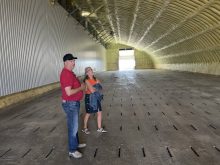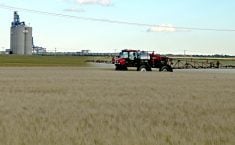SASKATOON – Vanderhoof, B.C. has a community computer network today because John Rowlandson got tired of paying $300 in phone bills each month.
The telecommunications consultant moved to the central interior town from Vancouver in the summer of 1994 and found he couldn’t get an e-mail address. So he called a meeting that drew 100 people from all backgrounds – students, farmers, forestry workers, church groups – who then went on to form a community computer network.
“In August ’95 we had our first dial up connection. And in October ’95 we had 100 users. Now we have 200.”
Read Also

New coal mine proposal met with old concerns
A smaller version of the previously rejected Grassy Mountain coal mine project in Crowsnest Pass is back on the table, and the Livingstone Landowners Group continues to voice concerns about the environmental risks.
Promote development
Rowlandson was keynote speaker at a conference last month that led a group of Saskatchewan communities to collaborate in developing computer networks.
He is enthusiastic about community networks, saying it takes equal portions of talent, institutional support and good luck to build one. A network is a cheaper way to assist all those interested in or who could benefit by information delivered swiftly by computer, he said.
Telemedicine is one way the network is being used in Vanderhoof. Local citizens who must have serious operations in distant city hospitals can dial up information about the procedure and check what they as a patient can expect or must do.
Many local businesses and churches have their own page on the community network to deliver their message. And while they work together to learn to use the new technology, they find side benefits in a better spirit of co-operation.
Rowlandson said the network is lobbying government and internet carriers to ensure rural concerns are addressed. The main problems are training and accessibility. One in five of the Vanderhoof-area telephones is on a party line and computers cannot use them.
Link to outside
“We see telecommunications as a piece of modern infrastructure like roads and bridges.”
Rowlandson said there were only five freenets (computer systems that were free to use) in Canada in 1993. Today there are 50 or 60. That’s because the costs of the equipment and lines are coming down.
Rowlandson even uses the hallmark of a small town – where everyone knows your business – as another reason to start a community network. Computers bring individuals anonymity.
















